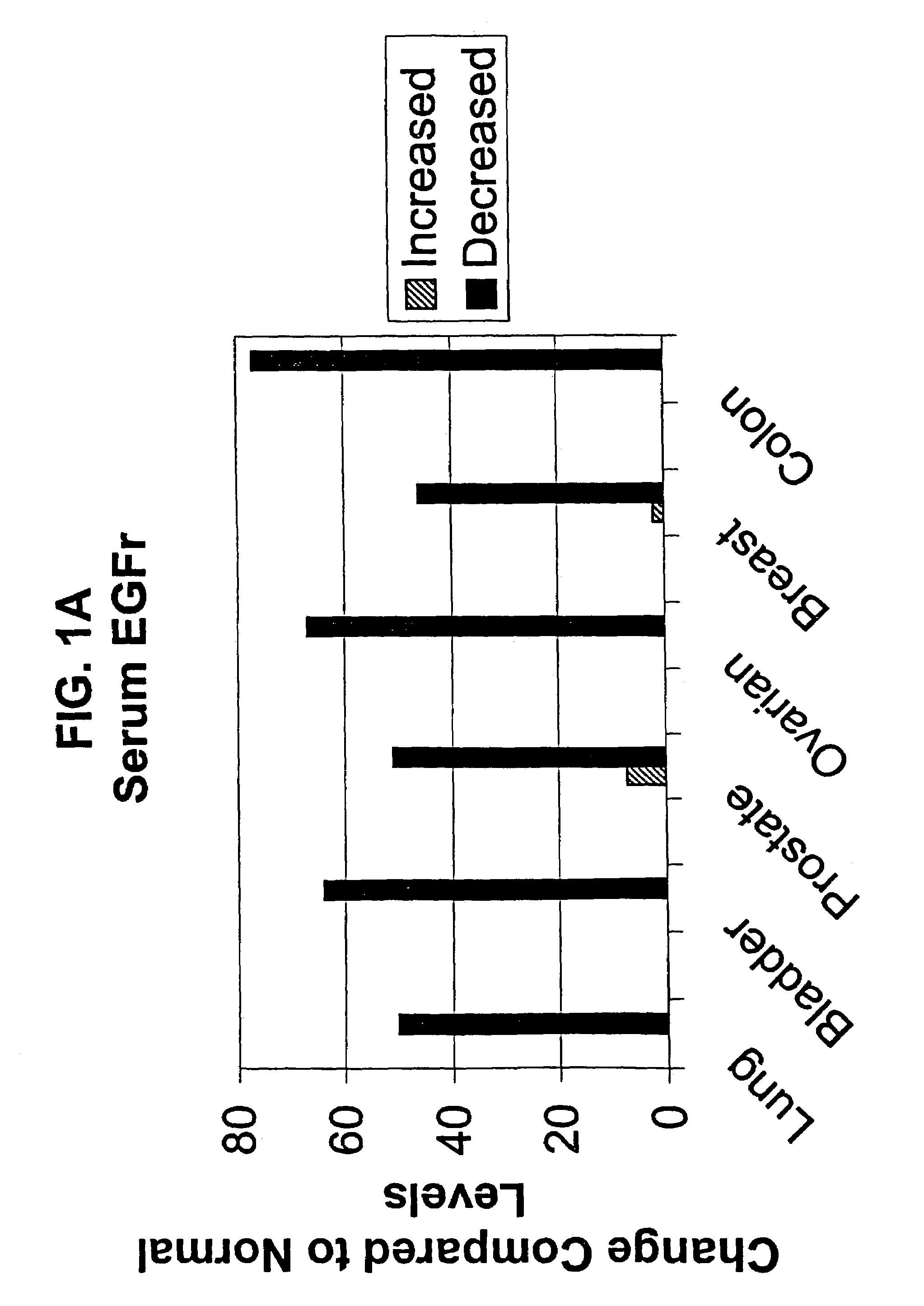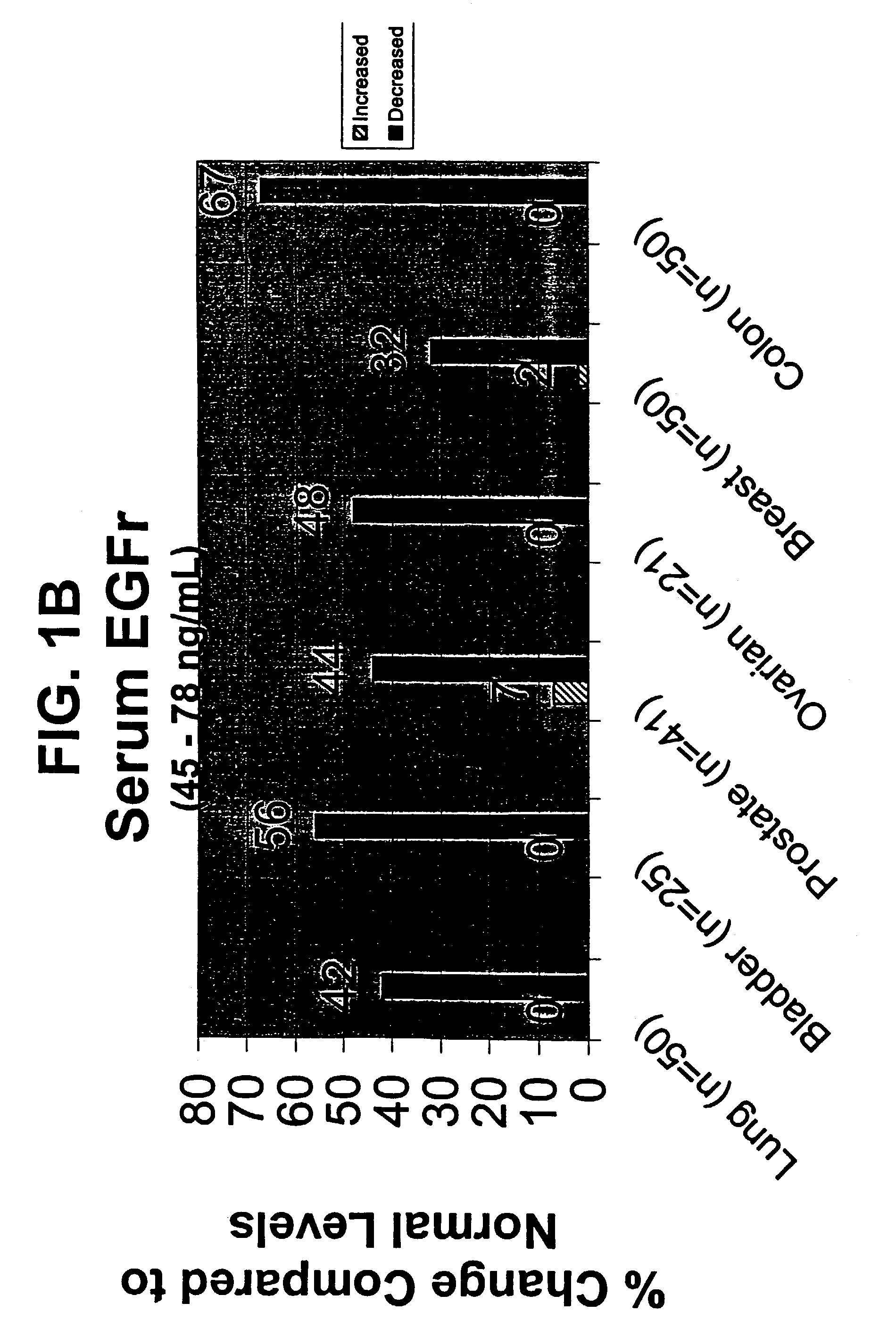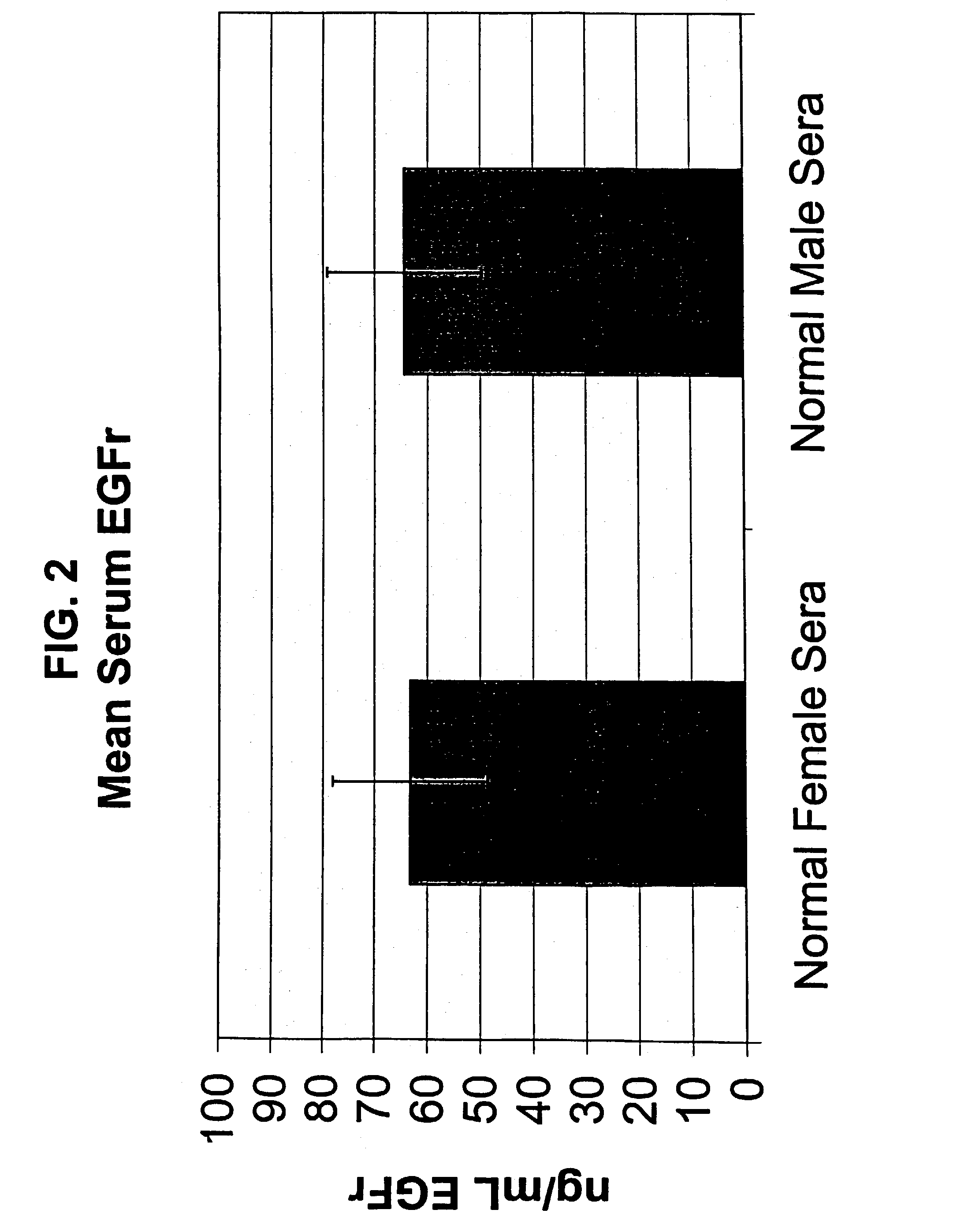Assays for cancer patient monitoring based on levels of epidermal growth factor receptor (EGFR) extracellular domain (ECD) analyte, alone or in combination with other analytes, in body fluid samples
a technology of epidermal growth factor receptor and cancer patient, applied in the field of assays, can solve the problems of cell proliferation, production of non-functional proteins that no longer control cell proliferation, etc., and achieve the effects of reducing tumor size, avoiding subjecting patients, and increasing treatment efficacy
- Summary
- Abstract
- Description
- Claims
- Application Information
AI Technical Summary
Benefits of technology
Problems solved by technology
Method used
Image
Examples
example 1
A. Enzyme Linked Immunoassay (ELISA) to Measure Levels of EGFR ECD in a Body Fluid Sample
[0102]Cell culture fluids are centrifuged to remove all particulate matter. After centrifugation, the samples can be analyzed without further treatment, or stored at −70° C. for future analysis. Cell culture supernatants are analyzed at a range of concentrations to assure that values in the positive cultures, e.g., A431 cells, fall on the standard curve. Maintenance of optimal pH is important for sample incubation; therefore, a starting dilution of at least 1:5 of the culture supernatant in the sample diluent is necessary for the ELISA immunoassay (Bayer Diagnostics / Oncogene Science EGFR Microtiter ELISA, Cambridge, Mass.). Two-fold dilutions in sample diluent from 1:5 to 1:160 provide useful results. The calculation of EGFR recovery in dilutions other than 1:50 require correction as follows: each result is multiplied by 50; this result is divided by the dilution factor for each point tested. Fo...
example 2
Microtiter Based ELISA to Examine Serum Levels of EGFR in Normal and Cancer Patient Serum Samples
[0129]Human serum samples were diluted in commercially available ELISA kit sample diluent (Bayer Diagnostics / Oncogene Science EGFR Microtiter ELISA, Cambridge, Mass.) and then analyzed in the EGFr microtiter ELISA, as described in Example 1. A standard curve with standards tested in duplicate was run in each ELISA. All normal sera samples were tested in duplicate by at least two different operators. Mean values were obtained for all samples tested. A total of 110 normal male and 111 normal female sera were tested in order to determine a normal cutoff. The cutoff was defined as the mean value + / − two standard deviations (+ / − SD). Cancer patient sera was then analyzed in the EGFR ELISA, with samples tested in duplicate by at least two different operators. All other experimental parameters were as above.
[0130]The determination of a normal value was defined as the mean value for the 221 norm...
example 3
Serum EGFR ECD Levels in Metastatic Breast Cancer Patients
[0134]In this Example, serum EGFR ECD was quantified in healthy individuals (controls) and in breast cancer patients using the Bayer Diagnostics / Oncogene Science EGFR Microtiter ELISA, as described in Example 1.
[0135]Pretreatment serum was obtained from 265 post-menopausal metastatic breast cancer patients in a multicenter, randomized, double-blind, phase III clinical trial of second line hormone therapy (Fadrozole versus Megestrol acetate). Normal controls consisted of two groups of females: (i) 46 pre-menopausal women having a mean EGFR ECD value of 79.54±9.87 ng / ml, with a range (mean±2 SD) of from 59.80-99.28 ng / ml; and (ii) 13 post-menopausal women having a mean EGFR ECD value of 89.87±16.40 ng / ml, with a range (mean±2 SD) of from 57.07-122.67 ng / ml. For the control groups, the mean serum EGFR ECD level was significantly higher in post-menopausal females (i.e., 89.87±16.40 ng / ml; n=13) compared with the mean EGFR ECD lev...
PUM
| Property | Measurement | Unit |
|---|---|---|
| mass | aaaaa | aaaaa |
| molecular weight | aaaaa | aaaaa |
| survival time | aaaaa | aaaaa |
Abstract
Description
Claims
Application Information
 Login to View More
Login to View More - R&D
- Intellectual Property
- Life Sciences
- Materials
- Tech Scout
- Unparalleled Data Quality
- Higher Quality Content
- 60% Fewer Hallucinations
Browse by: Latest US Patents, China's latest patents, Technical Efficacy Thesaurus, Application Domain, Technology Topic, Popular Technical Reports.
© 2025 PatSnap. All rights reserved.Legal|Privacy policy|Modern Slavery Act Transparency Statement|Sitemap|About US| Contact US: help@patsnap.com



